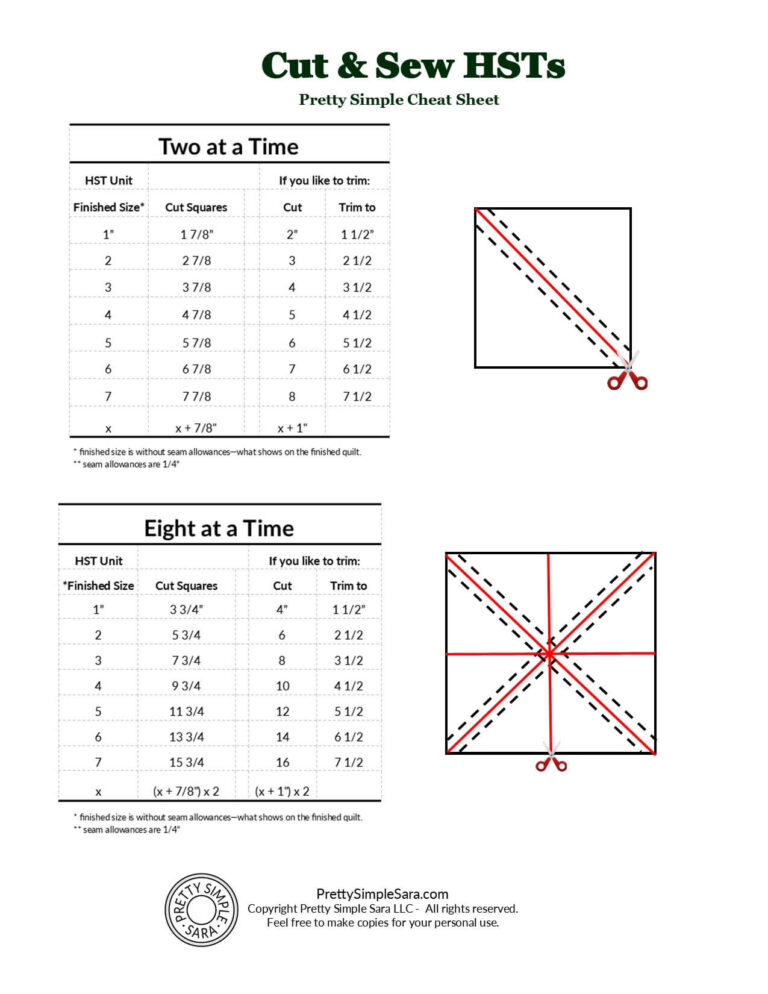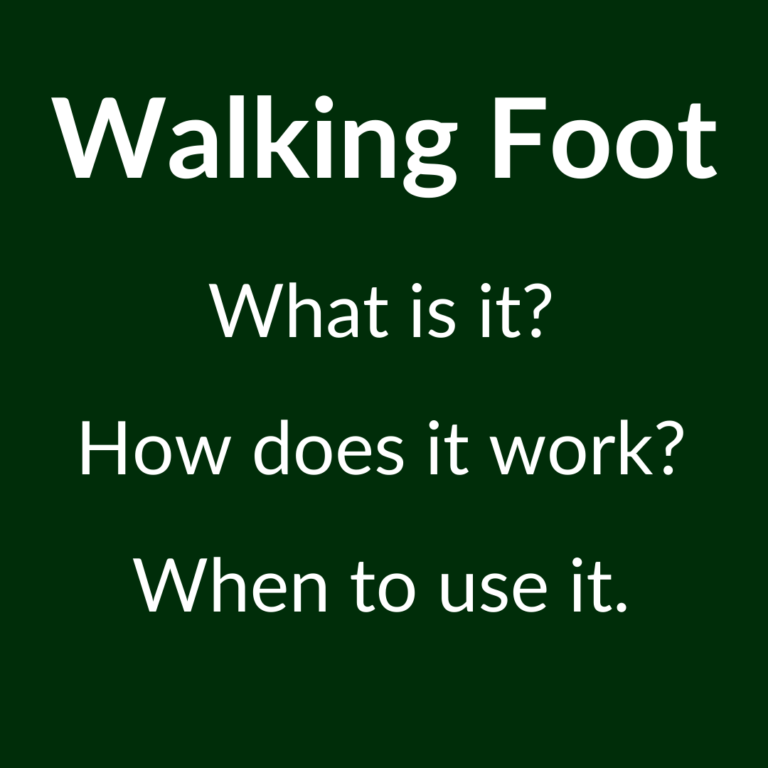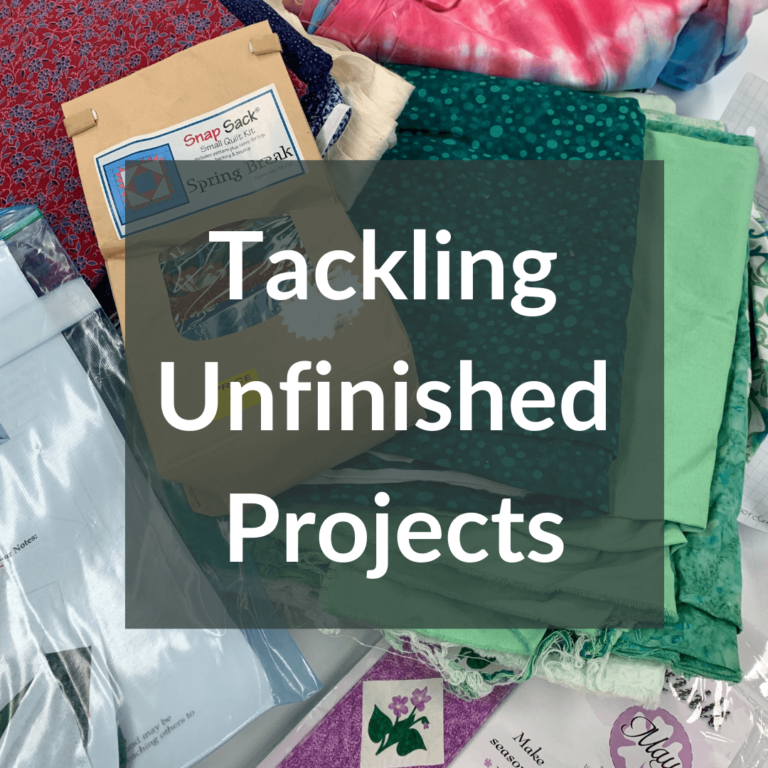How to finish your quilt
If you are making your very first quilt from a pattern you may have come to the end where it says layer, quilt and bind, or finish as desired. What does that mean?
Patterns make quilt tops not quilts
Most quilt patterns just give the instructions to make the quilt top – the part on the front of the quilt made up of lots of different pieces of fabric sewn together into pretty designs but have little to no instructions on how to make the top into a quilt.

That’s not an evil plot by the pattern makers. It’s just that once you’ve done the next steps a couple times you won’t need instructions!
And most patterns are written for serial quilters.
Step by step videos in this post:
Step 1 – Layer and baste
I’m sure you realize that for the quilt to become a quilt it has to have a backing and batting (the fluffy stuff in the middle). These layers are held together by the quilting stitches – the seams that are sewn through all the layers. But before you start doing those quilting stitches you need to baste the layers together. This is not like basting a turkey, it’s just temporarily securing the layers together so they don’t shift or pucker while you do the quilting stitches.
Don’t baste for the long arm quilter
If you will be sending your quilt to a longarm quilter to be quilted do NOT baste your quilt. The longarm machine is designed to hold the layers while it is being quilted. If you baste it the long arm quilter will actually have to unbaste it before they can load it onto their machine. Just send your top and backing separately. Many long arm quilters will also provide the batting for a fee
3 ways to baste a quilt
Which way you baste is a matter of how you plan to quilt your quilt, and personal preference.
Large stitches
If you’ve done other sewing you know that basting is just using large stitches to hold layers together. In quilting this is usually only done if you are hand quilting a quilt as the large basting stitches will get caught up as you are machine quilting. If you plan to hand quilt you may also want to ask a long arm quilter to baste you quilt for you. They can sew lines of basting stitches across your quilt very easily and these stitches will allow the quilt to be secured in a quilting hoop as you quilt.
Safety pins
Quilters use safety pins so they not only stay in place as the quilt is moved around, but also so they don’t poke you during the quilting process. You can use special curved safety pins to hold the layers together. The curve makes it easier to insert into the quilt. To avoid rust spots on your quilt get brass pins if there is any chance your quilt will get damp or the quilting process will take a long time. This can take a bit more time than spray basting, so it’s best for smaller quilts unless you have good knees.
Adhesive spray
There are specially designed adhesive sprays for sticking the batting to both the backing and the quilt top. Use one that is designed for basting a quilt so that it will not gum up your needle as you quilt. If you have chemical sensitivities you may want to baste your quilt outdoors.
How to baste a quilt
In the video below I show you the whole process of basting a quilt with pins or spray step by step:

Step 2 – Quilt
Once the quilt layers are basted, it’s time to permanently secure them together. This can be a purely functional or it can add an entirely new layer to the design of the quilt.

Methods to secure the layers
Before you launch into designing a complicated pattern to quilt onto your quilt, consider the pros and cons of the following methods to secure the layers together.
Tying

This is the fastest and easiest method to secure the layers. In fact, if you choose this method you may not even need to baste the quilt. You can set the quilt up for basting (see video above) and then just use embroidery thread or yarn to make stitches through the layers as it is still secured to the floor. Secure the stitches by tying the ends into double knots.
However, the quilt created is not as durable depending on how close each of the ties are, plus the ties are clearly visible on the front of the quilt.
Many quilters do not consider this quilting, but the beauty of creating is that you can do what you want with your creation. Tying has been used for many years to finish quilt tops into usable quilts quickly.
Machine quilting
Most quilts are finished with machine quilting. This can be done by a long arm quilter using a large machine, or with your regular sewing machine. Depending on the size of the quilt using your own machine can be quick and easy or cumbersome and frustrating. It’s helpful if your first quilt is a small quilt so you can decide if doing your own machine quilting is for you.
Using a long arm quilter to quilt your large quilts is an expensive but stress free way to quilt large quilts
Straight line with walking foot
The easiest machine quilting method you can do at home yourself is straight line machine quilting. This means you sew straight or gently curving lines across your quilt. It is important to use a walking foot to do this quilting so that you don’t end up with puckers or tucks on your finished quilt. It can feel limiting to not be able to do all the squiggles and curves you may have seen on quilts, but there are many many designs you can use – be creative! You can even use some of the fancy stitches on your sewing machine.

Free motion
To do free motion quilting, set up your machine so that you can move the quilt freely under the needle by dropping the feed dogs and using a free motion foot.
It looks fun, but requires practice if you want it to look exactly the way you envision it in your head. This is because not only do you have to move the quilt under the needle in the pattern you want but you have to move it at a speed that is coordinated with how fast your needle is stitching in order to get even stitches. It can be very frustrating, which is why I always recommend that new quilters stick to straight line quilting with the walking foot until they’re able to put in some practice.

Hand quilting
Hand quilting is a wonderful way to finish a quilt. It is relaxing – similar to embroidery or crochet. The finished product will be very rewarding. However, it will take much much longer than by machine. There was a reason that the sewing machine was such a revolutionary invention! If you are curious about hand quilting, check out this video from Shiny Happy World.
How to do straight line machine quilting with a walking foot
If I’ve convinced you that straight line machine quilting is the way for you to go, this video will give you the detailed steps you need to get started:
Step 3 – Bind
The final step of making a quilt is to bind the edges. This protects and seals the layers of the quilt and makes everything nice and neat.
My favorite method, and the easiest binding method for beginners, is to attach a separate binding by machine and hand stitch it to the back. This is far easier to make look nice than folding the backing over to the front!
It’s also the way that show quilts are bound, and the way snooty quilters insist is the only correct method, but let’s ignore that. Your first quilt doesn’t have to be perfect, but you also don’t want it to be stressful.
I truly believe my method is the easiest no fuss method to make neat and pretty binding. You spent a lot of time on your quilt, it deserves a neat and pretty binding, right?
I turned over the backing to the front on the very first quilt I made – a play quilt for my first child. It was a disaster. After a few years of experience, and wear and tear that made it look even worse, I undid it and added this type of binding. The quilt is now still going strong for any visiting babies.
The hand stitching is not as scary or as time consuming as it may sound, but I do give other alternatives for the finishing the binding in the video below.
This video shows you the complete step by step binding process from how many binding strips to cut, to easily turning corners, and to making it look seamless.
If you’ve not made your first quilt and would like a step by step guide – from negotiating the fabric store to deciding the pattern to quilt on your quilt, check out my course below. By making a simple table runner from start to finish you can eliminate the learning curve and produce a first quilt that looks like you’ve been quilting for years.





